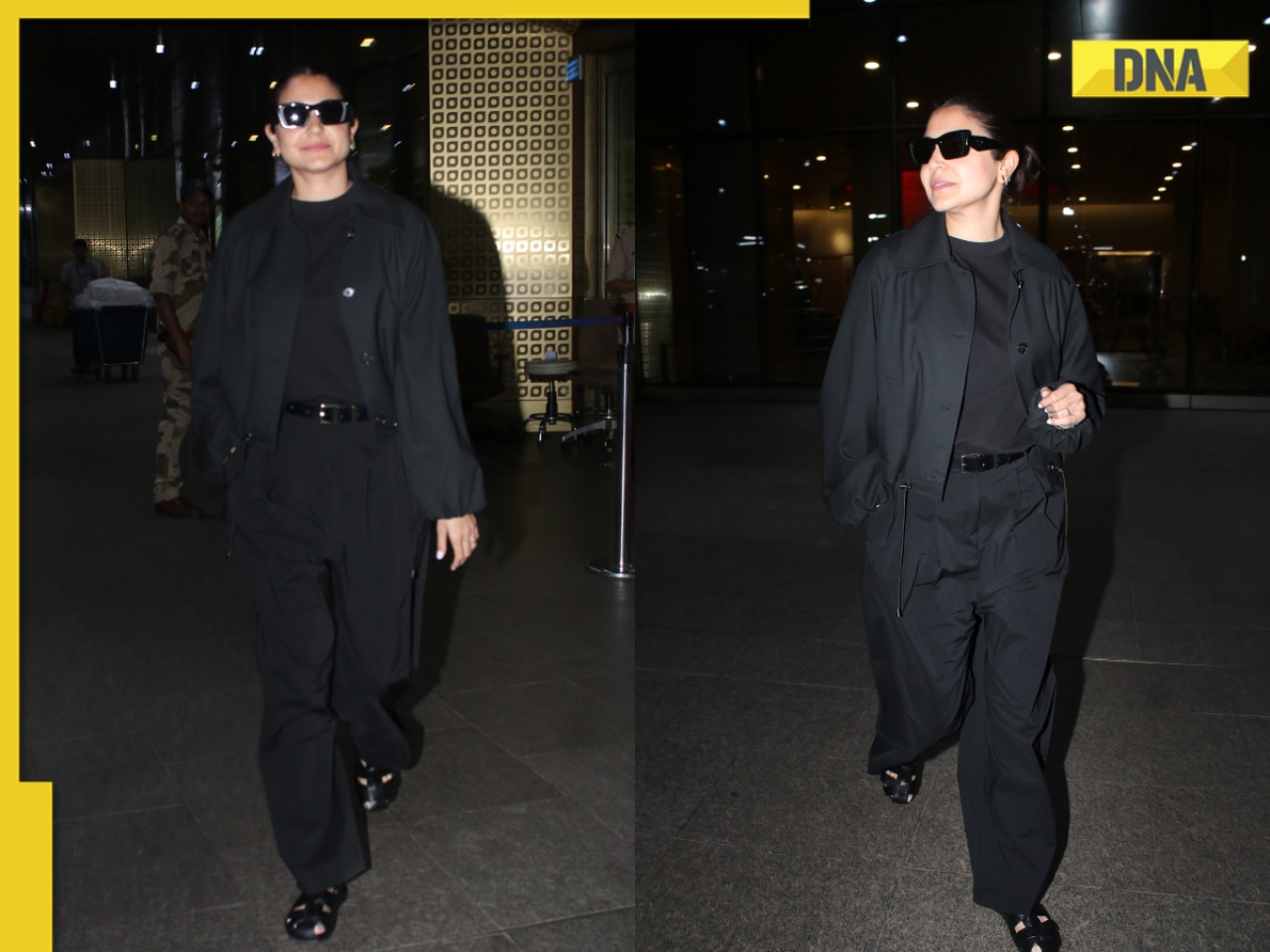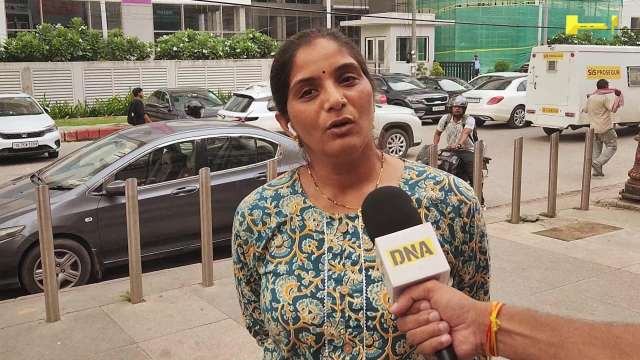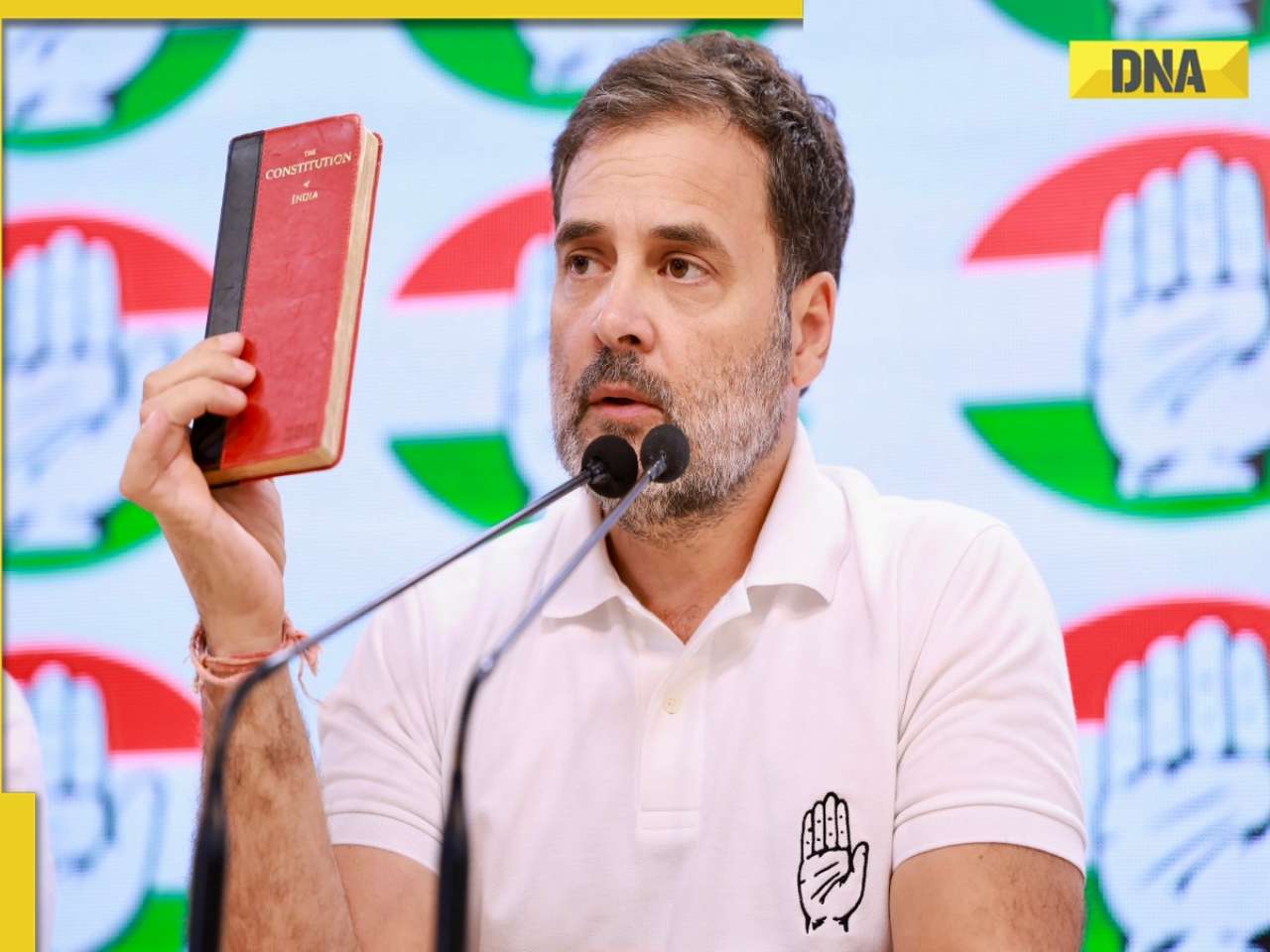Except for Vihar Lake, all other lakes are way behind average.
This year’s monsoon is already a month old and it’s time to take stock.
It’s good news for residential areas in the city, which have witnessed the highest June rainfall in the past decade. However, in catchment areas - belts that need water the most - the rains have not been quiet up to the mark.
Even though the catchment areas have received more rainfall than what it had at this point in time last year, overall the rains in five of the six catchments has been far below the average rainfall recorded in June during the past few monsoons.
Only Vihar Lake, which has its catchment located inside the Sanjay Gandhi National Park, has seen above average rains, according to information compiled by the Brihanmumbai Municipal Corporation’s (BMC) hydraulic department.
The department used rainfall data from catchments collected from 2005 to 2008 to calculate the average rainfall over them in recent years.
According to a senior department official, rainfall witnessed in 2005, a surplus year, and 2008, a deficient year, were excluded for obvious reasons.
Vihar has so far received 947.80 mm of rainfall, which is 25% above the three-year (2005-2008) average of 754.50 mm.
Rains have, however, not been generous over other catchments.
The rainfall recorded so far in the Modak Sagar catchment - 274.80 mm - is nearly 45% below the three-year average. Upper Vaitarna belt has similarly seen 45% below average rains.
The rainfall recorded in the Tansa catchment was 38% below average and Bhatsa, which along with Upper Vaitarna, accounts for a lion share of city’s water supply, is 16% below the average.
According to senior officials, even though rains have led to a rise in water levels, even these levels were 25% below those seen during the three years.
In fact, even in 2009, the reservoirs, at this point, had more water available than this year, added the official. The reservoirs are collectively holding 1.20 lakh million litre of water. At this time last year, the corresponding figure was 1.62 million litre.
Another department official, however, said that things were looking up with the meteorological department forecasting a normal monsoon.
“The department was hoping for more rains over the catchments in June,” the official said. He described the present catchment scene as “not very pleasing, but not worrying”. But, there is no immediate proposal to pull back the city’s water cuts. The hydraulic department is hoping that rains consolidate further in July. So far, the Colaba observatory has seen 947 mm rainfall, while the Santa Cruz observatory has witnessed 712 mm of rains.
![submenu-img]() Anushka Sharma returns to Mumbai amid rumours of moving to London; fans note Virat Kohli, Vamika, Akaay's absence
Anushka Sharma returns to Mumbai amid rumours of moving to London; fans note Virat Kohli, Vamika, Akaay's absence![submenu-img]() Big TROUBLE for ex-trainee IAS officer Puja Khedkar as Delhi Police accuse her of....
Big TROUBLE for ex-trainee IAS officer Puja Khedkar as Delhi Police accuse her of....![submenu-img]() Rahul Gandhi meets Olympians Vinesh Phogat, Bajrang Punia ahead of Haryana Assembly elections
Rahul Gandhi meets Olympians Vinesh Phogat, Bajrang Punia ahead of Haryana Assembly elections![submenu-img]() This superstar 'lost control' during intimate scene with 20-year-old actress, bit her, left her bleeding, in tears
This superstar 'lost control' during intimate scene with 20-year-old actress, bit her, left her bleeding, in tears![submenu-img]() Swine flu: What is H1N1 infection? Symptoms, protective measures to stay safe from influenza virus
Swine flu: What is H1N1 infection? Symptoms, protective measures to stay safe from influenza virus![submenu-img]() उचाना से दुष्यंत चौटाला, डबवाली से दिग्विजय लड़ेंगे चुनाव, हरियाणा में JJP-ASP ने जारी की पहली लिस्ट
उचाना से दुष्यंत चौटाला, डबवाली से दिग्विजय लड़ेंगे चुनाव, हरियाणा में JJP-ASP ने जारी की पहली लिस्ट![submenu-img]() Kolkata Rape-Murder Case: पूर्व प्रिंसिपल संदीप घोष ने सुप्रीम कोर्ट का खटखटाया दरवाजा, HC के फैसले को दी चुनौती
Kolkata Rape-Murder Case: पूर्व प्रिंसिपल संदीप घोष ने सुप्रीम कोर्ट का खटखटाया दरवाजा, HC के फैसले को दी चुनौती![submenu-img]() FinTech, डिजिटल पेमेंट... भारत-ब्रुनेई के बीच इन मुद्दों पर बनी बात, PM मोदी बोले- नए युग की शुरुआत
FinTech, डिजिटल पेमेंट... भारत-ब्रुनेई के बीच इन मुद्दों पर बनी बात, PM मोदी बोले- नए युग की शुरुआत![submenu-img]() Kangana Ranaut को लगा झटका, अब 6 सितंबर को नहीं रिलीज होगी Emergency, जानें कब देगी दस्तक
Kangana Ranaut को लगा झटका, अब 6 सितंबर को नहीं रिलीज होगी Emergency, जानें कब देगी दस्तक![submenu-img]() Rahul Dravid: 8 साल बा��द राहुल द्रविड़ की IPL में वापसी, इस टीम के बने हेड कोच
Rahul Dravid: 8 साल बा��द राहुल द्रविड़ की IPL में वापसी, इस टीम के बने हेड कोच![submenu-img]() DNA Auto Awards 2024: Citroen Basalt nominated for ‘CAR OF THE YEAR’; check price, features
DNA Auto Awards 2024: Citroen Basalt nominated for ‘CAR OF THE YEAR’; check price, features![submenu-img]() DNA Auto Awards 2024: Tata Curvv nominated for ‘CAR OF THE YEAR’; check price, features
DNA Auto Awards 2024: Tata Curvv nominated for ‘CAR OF THE YEAR’; check price, features![submenu-img]() DNA Auto Awards 2024: Mahindra Thar Roxx nominated for ‘CAR OF THE YEAR��’; check price, features
DNA Auto Awards 2024: Mahindra Thar Roxx nominated for ‘CAR OF THE YEAR��’; check price, features![submenu-img]() 2025 Aston Martin Vanquish revealed: Check expected price, features, top speed
2025 Aston Martin Vanquish revealed: Check expected price, features, top speed![submenu-img]() Jawa 42 FJ launched in India, rivals Royal Enfield Hunter 350: Check price, features, design
Jawa 42 FJ launched in India, rivals Royal Enfield Hunter 350: Check price, features, design![submenu-img]() Meet woman who quit high-paying job in abroad for UPSC exam, but failed to crack it thrice, took 3-year break and then…
Meet woman who quit high-paying job in abroad for UPSC exam, but failed to crack it thrice, took 3-year break and then…![submenu-img]() Meet man, who worked at Google with Rs 2 crore salary job, took retirement at 29 due to....
Meet man, who worked at Google with Rs 2 crore salary job, took retirement at 29 due to....![submenu-img]() Where is UPSC topper Tina Dabi's sister, IAS officer Ria Dabi?
Where is UPSC topper Tina Dabi's sister, IAS officer Ria Dabi?![submenu-img]() Meet IAS Vaishanvi Paul, know how one question helped her crack UPSC exam in...
Meet IAS Vaishanvi Paul, know how one question helped her crack UPSC exam in...![submenu-img]() Meet woman, who got inspired by IAS Tina Dabi, cleared UPSC exam in first attempt, became IPS officer with AIR...
Meet woman, who got inspired by IAS Tina Dabi, cleared UPSC exam in first attempt, became IPS officer with AIR...![submenu-img]() Giriraj Singh Attacked: Union Minister Giriraj Singh Assaulted In Begusarai, Bihar; Accused Arrested
Giriraj Singh Attacked: Union Minister Giriraj Singh Assaulted In Begusarai, Bihar; Accused Arrested![submenu-img]() Haryana Assembly Election 2024: Haryana Assembly Election Date Changed, Check Details Here
Haryana Assembly Election 2024: Haryana Assembly Election Date Changed, Check Details Here![submenu-img]() Vinesh Phogat Joins Farmers' Protest At Shambhu Border, Answers On Joining Politics | Congress | BJP
Vinesh Phogat Joins Farmers' Protest At Shambhu Border, Answers On Joining Politics | Congress | BJP![submenu-img]() Tripura Floods: 12 Killed, Over 300 Rescued As Heavy Rains Causes Severe Flooding In Tripura
Tripura Floods: 12 Killed, Over 300 Rescued As Heavy Rains Causes Severe Flooding In Tripura![submenu-img]() Kolkata Doctor Murder: Are Indian Rape Laws Enough? Public Opinion On Stricter Measures
Kolkata Doctor Murder: Are Indian Rape Laws Enough? Public Opinion On Stricter Measures![submenu-img]() Mukesh Ambani's superhit plan for Jio customers: 1.5 GB data for 30 days, unlimited calls for just...
Mukesh Ambani's superhit plan for Jio customers: 1.5 GB data for 30 days, unlimited calls for just...![submenu-img]() Mukesh Ambani's big move, set to challenge HDFC, SBI with...
Mukesh Ambani's big move, set to challenge HDFC, SBI with...![submenu-img]() Meet brothers, who built India's 4th largest pharma firm worth Rs 95876 crore, billionaires with net worth of...
Meet brothers, who built India's 4th largest pharma firm worth Rs 95876 crore, billionaires with net worth of...![submenu-img]() DNA Auto Awards 2024: Citroen Basalt nominated for ‘CAR OF THE YEAR’; check price, features
DNA Auto Awards 2024: Citroen Basalt nominated for ‘CAR OF THE YEAR’; check price, features![submenu-img]() DNA Auto Awards 2024: Tata Curvv nominated for ‘CAR OF THE YEAR’; check price, features
DNA Auto Awards 2024: Tata Curvv nominated for ‘CAR OF THE YEAR’; check price, features![submenu-img]() This star won National Award at 19, got stuck with bold roles; one controversy ended her career; now lives in poverty
This star won National Award at 19, got stuck with bold roles; one controversy ended her career; now lives in poverty![submenu-img]() India's most profitable film, made in Rs 25 lakh, earned 2000% profit, beat Sholay, Dangal, Baahubali, RRR; it is...
India's most profitable film, made in Rs 25 lakh, earned 2000% profit, beat Sholay, Dangal, Baahubali, RRR; it is...![submenu-img]() Two films had same story, characters; one became India's best film and other Bollywood's biggest flop, the reason is...
Two films had same story, characters; one became India's best film and other Bollywood's biggest flop, the reason is...![submenu-img]() Meet actor who slept on floors, shared room with 8 people, earned Rs 400, later gave Rs 1000 crore blockbuster
Meet actor who slept on floors, shared room with 8 people, earned Rs 400, later gave Rs 1000 crore blockbuster![submenu-img]() Six side-effects of momos you should know
Six side-effects of momos you should know![submenu-img]() Big TROUBLE for ex-trainee IAS officer Puja Khedkar as Delhi Police accuse her of....
Big TROUBLE for ex-trainee IAS officer Puja Khedkar as Delhi Police accuse her of....![submenu-img]() Rahul Gandhi meets Olympians Vinesh Phogat, Bajrang Punia ahead of Haryana Assembly elections
Rahul Gandhi meets Olympians Vinesh Phogat, Bajrang Punia ahead of Haryana Assembly elections![submenu-img]() 'Would have never collapsed if...': Nitin Gadkari said on Shivaji Maharaj statue collapse
'Would have never collapsed if...': Nitin Gadkari said on Shivaji Maharaj statue collapse![submenu-img]() SEBI officials complain to Finance Ministry of 'toxic' work culture: Report
SEBI officials complain to Finance Ministry of 'toxic' work culture: Report![submenu-img]() Rahul Gandhi to visit J-K today, to sound poll bugle with two mega rallies ahead of assembly polls
Rahul Gandhi to visit J-K today, to sound poll bugle with two mega rallies ahead of assembly polls 











































)
)
)
)
)
)
)
)
)
)
)
)
)
)





)
)
)
)
)
)